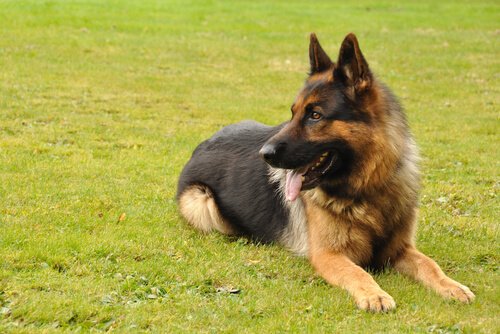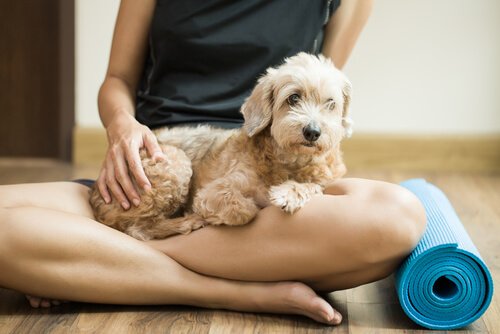Hip dysplasia in dogs: What is it and how is it treated?
After a certain age, our beloved pets start to develop diseases and disorders. Hip dysplasia, which is hereditary, bone-related and non-congenital (it does not manifest at birth), is common in certain breeds of dogs. Learn what it is and how it is treated below.
What you should know about hip dysplasia in dogs
Hip dysplasia affects the bones and, although it may begin when a dog is only a few months old, it’s more common at 8 years old or older. Hip dysplasia is degenerative in dogs (it gets worse over time) and is caused by a malformation in the hip joint.
It can cause lameness, pain, and difficulty walking, sitting and climbing stairs. It is usually bilateral, meaning that it affects both hind legs equally. The disease is more common in large breeds, such as German Shepherds, Dobermans, Labrador Retrievers, Boxers, Dalmatians and Irish Setters.

Dogs who gain weight quickly are at risk too. Therefore, external factors matter, such as diet, lack of exercise and being overweight.
However, the main cause of the disease is genetic. A puppy without the dysplasia genes will never develop it, even if it gains weight. There are varying degrees of severity depending upon the angle between the two femur heads:
- Mild: between 100 and 105°
- Moderate: between 90 and 100°
- Serious: Less than 90°
How hip dysplasia is treated in dogs
Although a veterinarian will be the one to diagnose dysplasia, after performing x-rays, the owner may be able to spot it. You may notice:
- difficulty standing after spending hours lying down
- excessive fatigue for no apparent reason
- refusing to climb stairs or perform certain activities (jumping, for example)
- walking very slowly
- walking wtih the hips “lower” than usual
Once the professional identifies the disease, they may recommend different treatments to strengthen or relax the muscles. Treatment also involves therapy to alleviate pain and delay progression.
1. Massages
When your dog refuses to use one of his legs out of pain, it can lead to muscular atrophy. To counteract this problem, you can give him massages to promote muscle recovery and readjust the spine. Massage along either side of your dog’s spine with some pressure, but not enough to make him uncomfortable.
2. Passive stretches
After surgery for hip dysplasia, the owner should perform passive exercises on their dog to help recover range of motion in the leg. With you dog lying down and still, perform a light massage and then stretches, rotating and bending the affected leg.

3. Active exercises
For the second part of postoperative treatment, your dog will already be able to move by himself, albeit slowly and with help. This is the purpose of stabilizing exercises. As the name suggests, they help your dog walk by himself. They consist of short, slow walks with you holding your dog from behind (around the waist) to keep him from falling sideways.
4. Hydrotherapy and physiotherapy
Both can be very helpful when a dog has hip dysplasia. Hydrotherapy is perfect for furry water lovers like Labradors, because without even realizing it, they’ll be strengthening their muscles and increasing the range of motion in their joints without overloading them. Physiotherapy has similar effects, but it should always be done by a professional.
Source of the main image: Matt Chan.